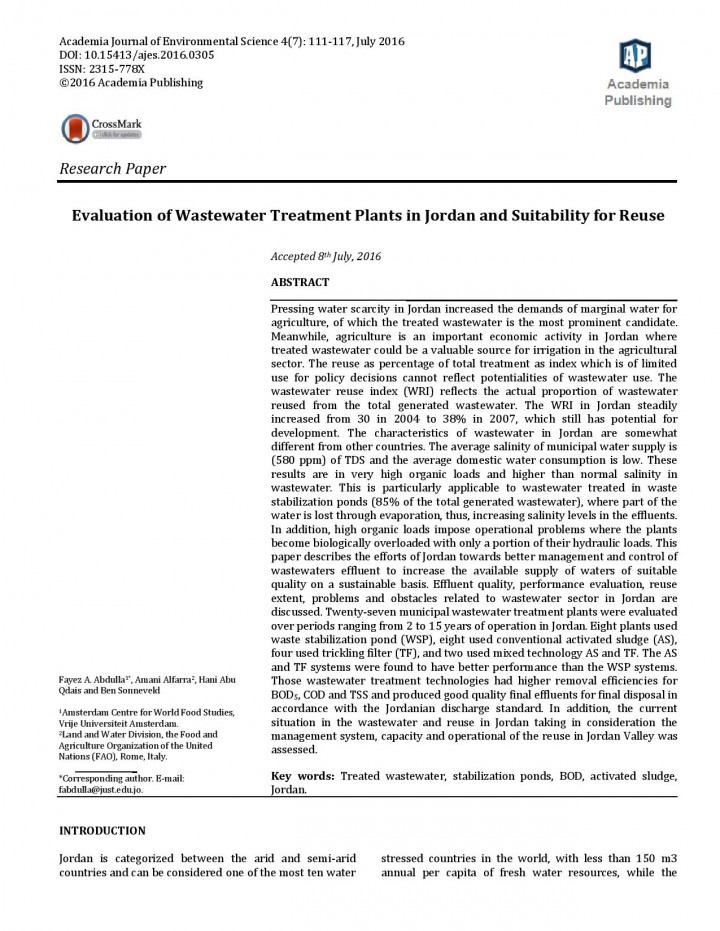Evaluation of Wastewater Treatment Plants in Jordan and Suitability for Reuse Abdulla, F., Abu-Qudais, H., AlFarra, A., Sonneveld, B. (2016)
Pressing water scarcity in Jordan increased the demands of marginal water for agriculture, of which the treated wastewater is the most prominent candidate. Meanwhile, agriculture is an important economic activity in Jordan where treated wastewater could be a valuable source for irrigation in the agricultural sector. The reuse as percentage of total treatment as index which is of limited use for policy decisions cannot reflect potentialities of wastewater use. The wastewater reuse index (WRI) reflects the actual proportion of wastewater reused from the total generated wastewater. The WRI in Jordan steadily increased from 30 in 2004 to 38% in 2007, which still has potential for development. The characteristics of wastewater in Jordan are somewhat different from other countries. The average salinity of municipal water supply is (580 ppm) of TDS and the average domestic water consumption is low. These results are in very high organic loads and higher than normal salinity in wastewater. This is particularly applicable to wastewater treated in waste stabilization ponds (85% of the total generated wastewater), where part of the water is lost through evaporation, thus, increasing salinity levels in the effluents. In addition, high organic loads impose operational problems where the plants become biologically overloaded with only a portion of their hydraulic loads. This paper describes the efforts of Jordan towards better management and control of wastewaters effluent to increase the available supply of waters of suitable quality on a sustainable basis. Effluent quality, performance evaluation, reuse extent, problems and obstacles related to wastewater sector in Jordan are discussed. Twenty-seven municipal wastewater treatment plants were evaluated over periods ranging from 2 to 15 years of operation in Jordan. Eight plants used waste stabilization pond (WSP), eight used conventional activated sludge (AS), four used trickling filter (TF), and two used mixed technology AS and TF. The AS and TF systems were found to have better performance than the WSP systems. Those wastewater treatment technologies had higher removal efficiencies for BOD5, COD and TSS and produced good quality final effluents for final disposal in accordance with the Jordanian discharge standard. In addition, the current situation in the wastewater and reuse in Jordan taking in consideration the management system, capacity and operational of the reuse in Jordan Valley was assessed.
Bibliographic information
Abdulla, F., Abu-Qudais, H., AlFarra, A., Sonneveld, B. (2016). Evaluation of Wastewater Treatment Plants in Jordan and Suitability for Reuse Academia Journal of Environmental Science 4(7): 111-117, July 2016, DOI: 10.15413/ajes.2016.0305, ISSN: 2315-778X
Filter / Tags
Decentralised wastewater treatment (e.g. DEWATS)Faecal sludge treatment processesGreywater or wastewaterEnglish
Downloads
Evaluation of Wastewater Treatment Plants in Jordan and Suitability for Reuse
Type: application/pdf
Size: 0.91 MB

